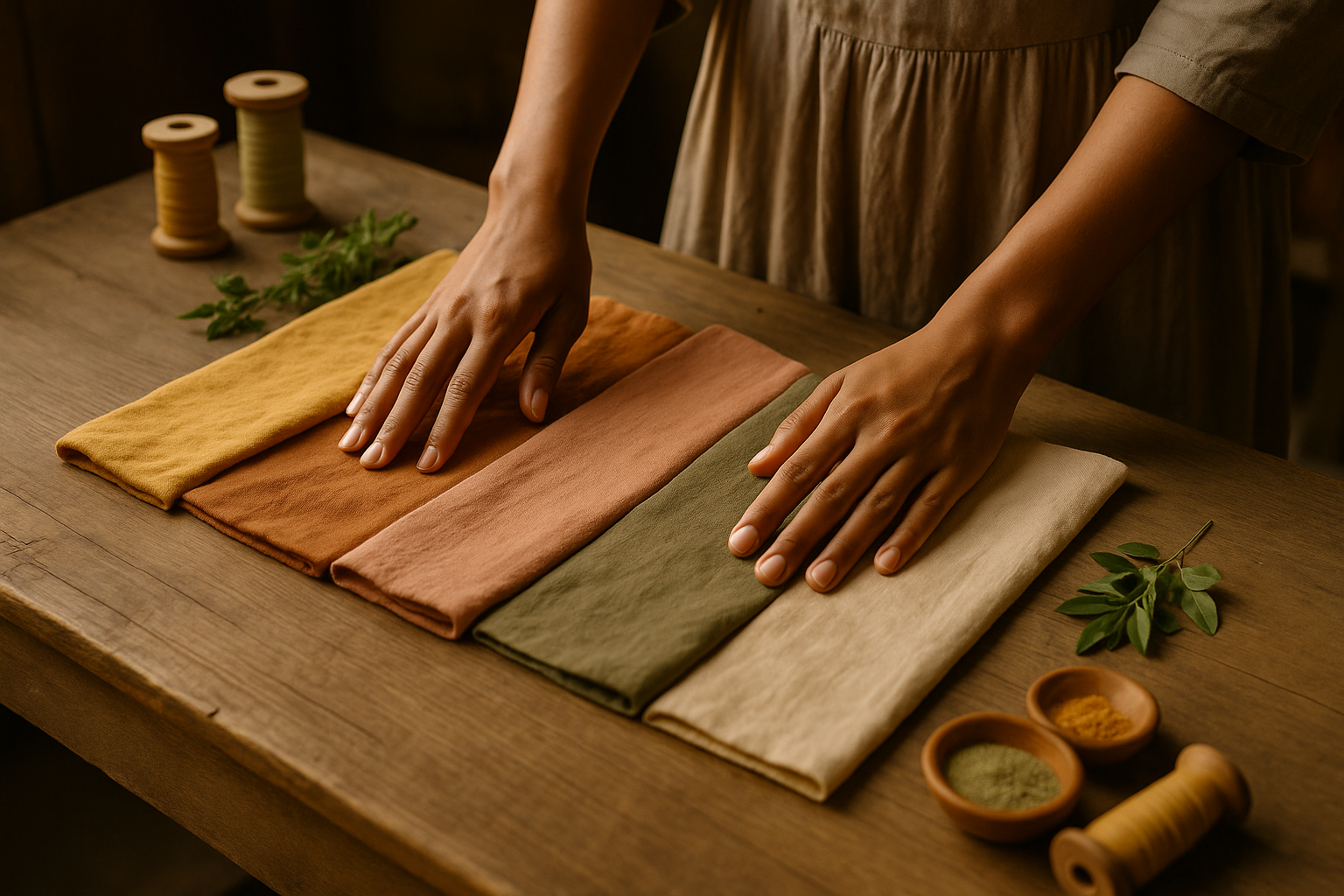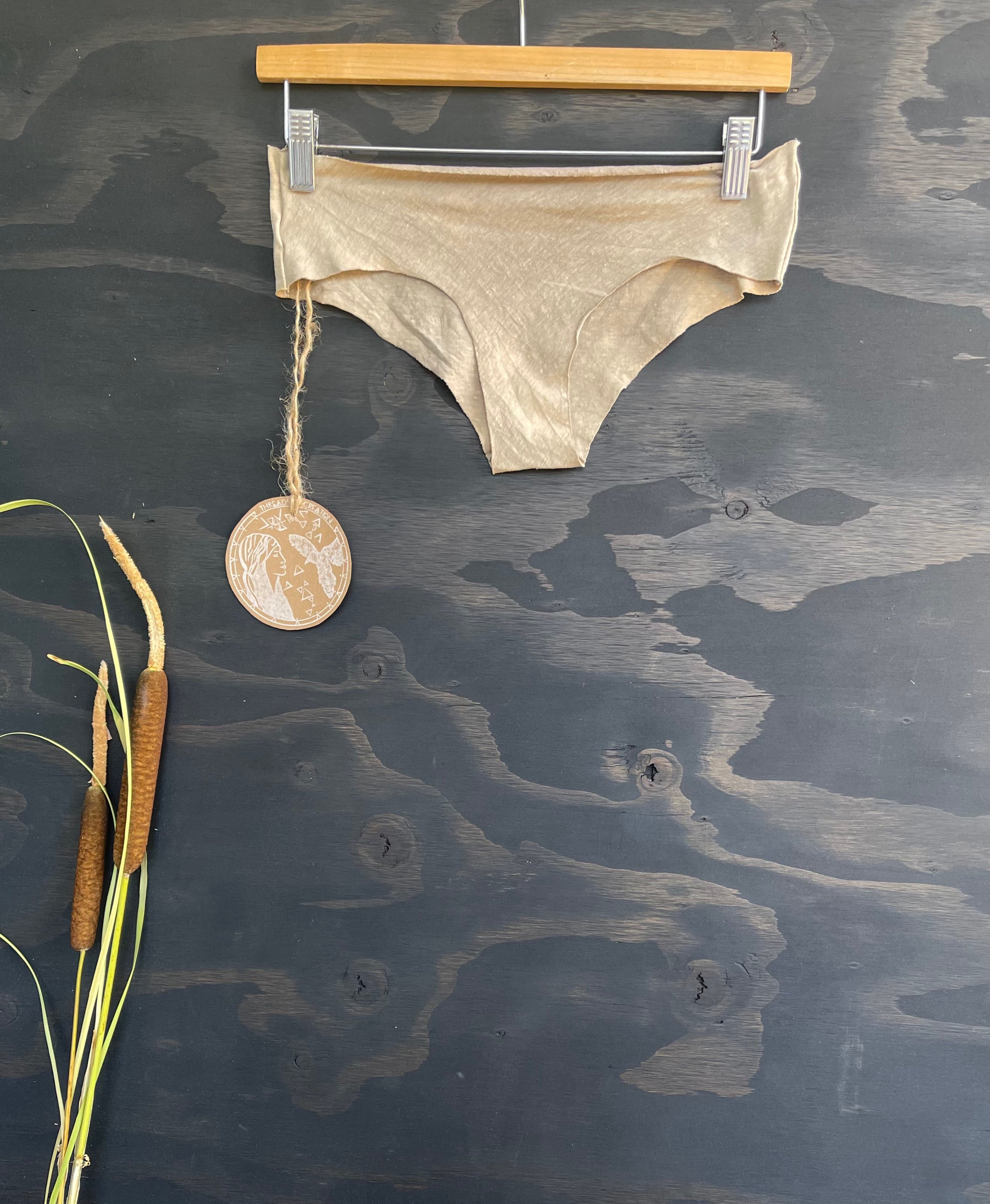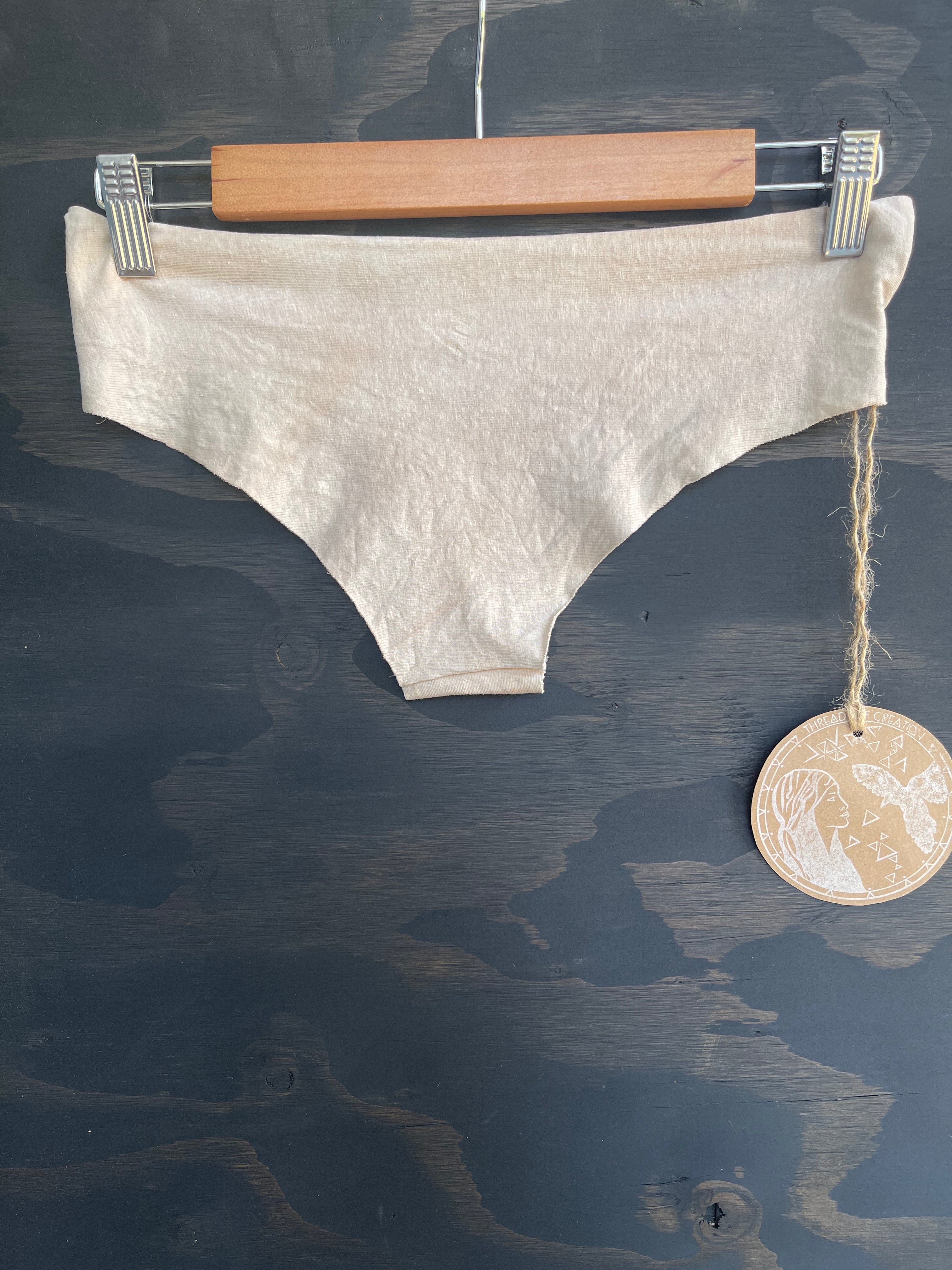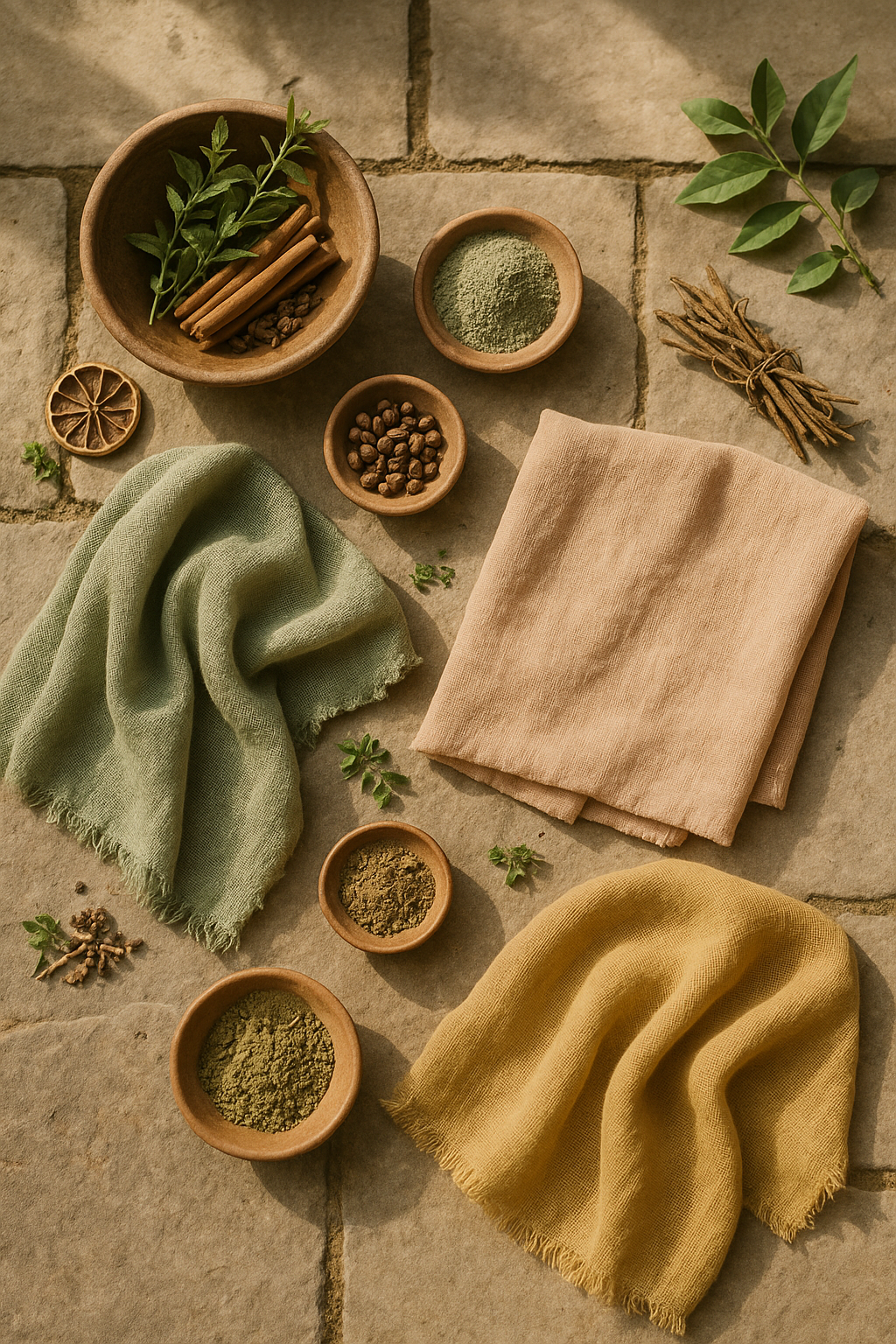
Ayurvastra: The Tradition of Healing Cloth
.
Ayurvastra — “healing cloth” — is a branch of Ayurveda where textiles are prepared as medicine. Cloth is dyed and finished in carefully brewed herbal infusions, so that the fabric itself carries the qualities of the plants it has absorbed. Traditionally, Ayurvastra garments were prescribed in Ayurvedic hospitals to support healing over time: bedding, robes, and wraps chosen not only for their comfort but for the remedies woven into their fibers.
Unlike conventional fabrics, Ayurvastra uses no synthetic dyes or chemical mordants. Colors are fixed with natural binders like clay, cow’s milk, or tannin-rich barks, leaving the cloth breathable, hypoallergenic, and biodegradable. Each piece is both garment and remedy: color and plant medicine expressed through natural fiber.
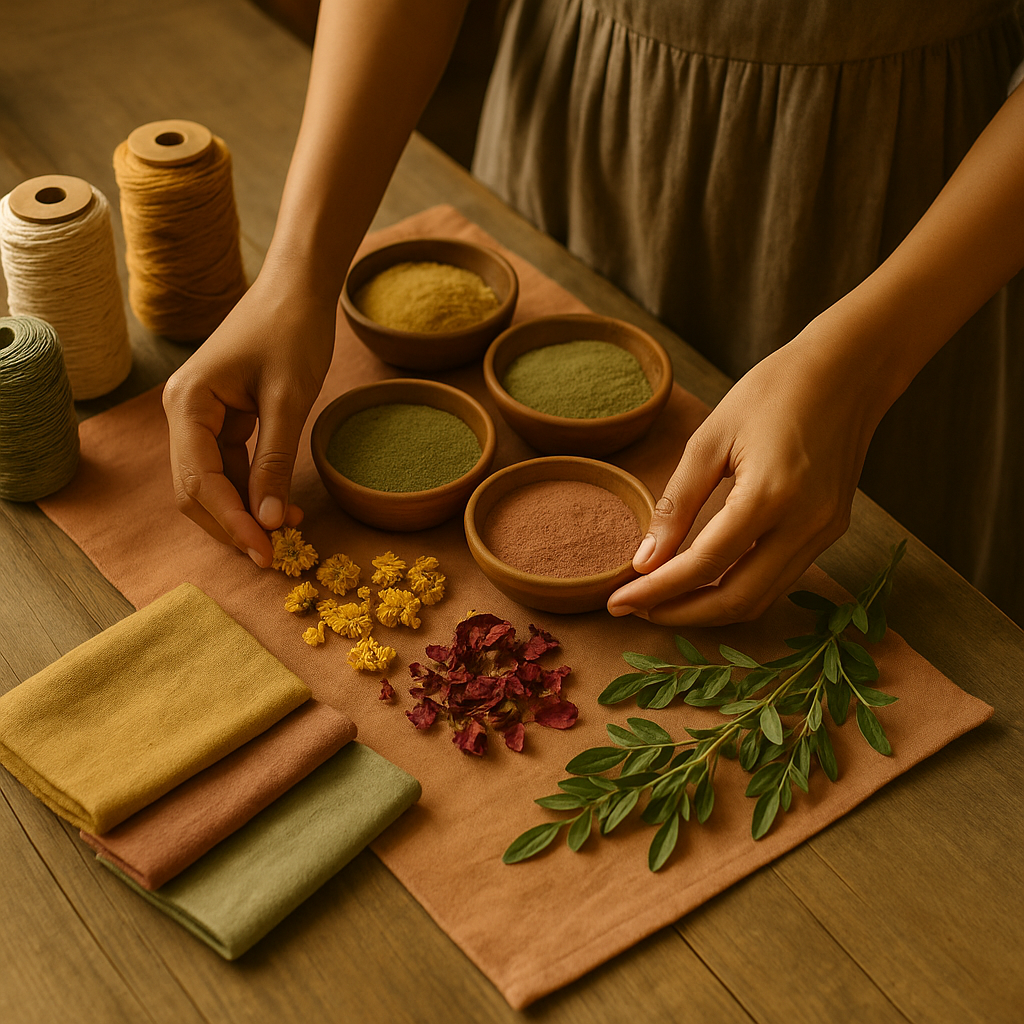
The Two-Step Dyeing Process
.
The Base Infusion
Every Ayurvastra piece begins in a neutral, medicinal bath that lays a foundation of healing compounds without overpowering the color palette. This base often includes:
- Neem (Azadirachta indica) — antimicrobial, skin-cleansing → earthy browns
- Tulsi / Holy Basil (Ocimum sanctum) — purifying, immune-supportive → muted greens
- Sandalwood (Santalum album) — cooling, calming → pale beige/cream
- Vetiver (Chrysopogon zizanioides) — grounding, stabilizing nerves → golden-browns
- Aloe vera — soothing, regenerative → very pale tones
- Amla (Phyllanthus emblica) — antioxidant, rejuvenative → soft yellow-khaki
- Triphala (blend of Haritaki, Bibhitaki, Amla) — detoxifying, balancing → soft yellows/greys
- Ashwagandha (Withania somnifera) — strengthening, adaptogenic → warm earth tones
This step ensures every piece carries a spectrum of herbal support before any color-focused dyes are introduced.
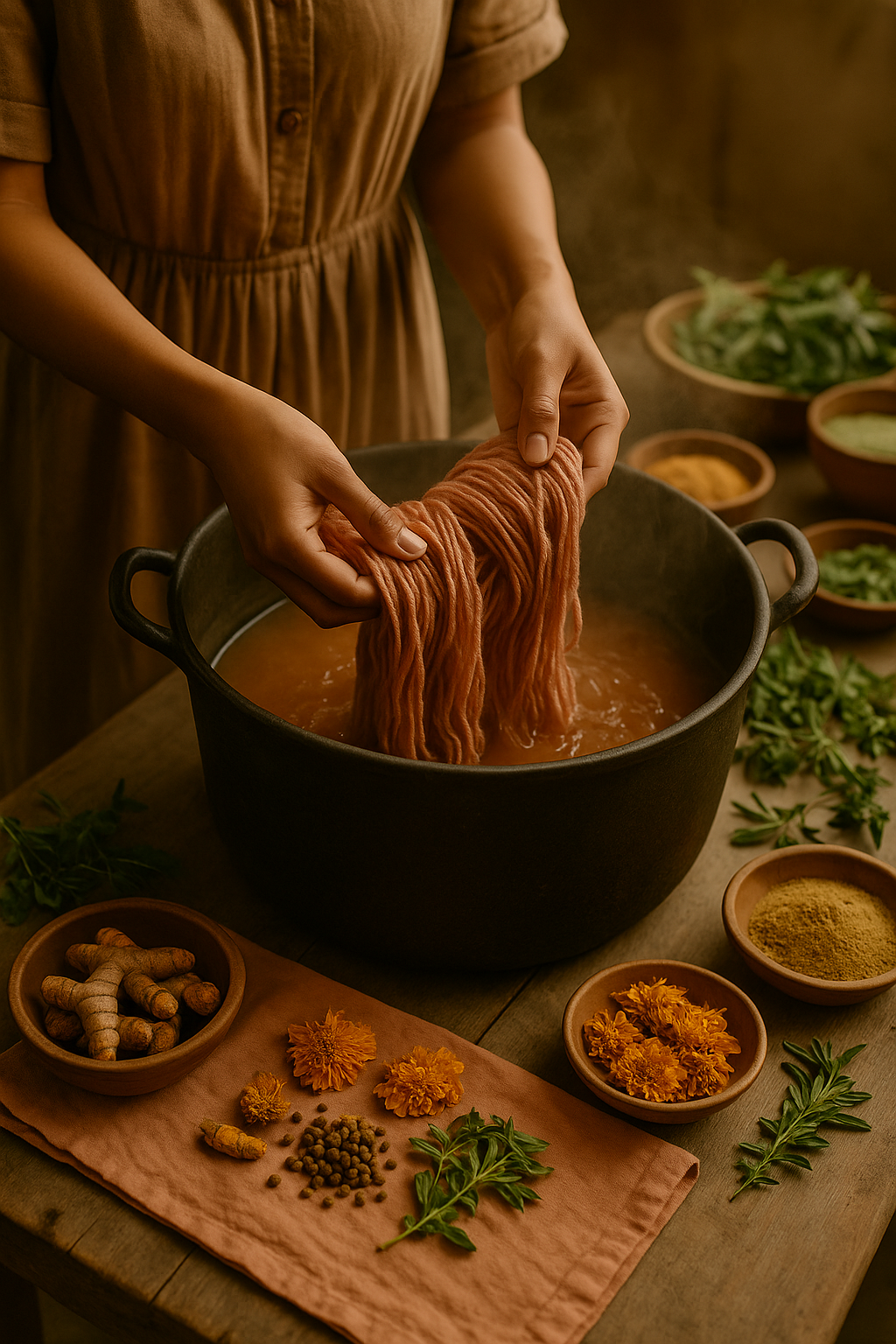
Color and energetic Layer
.
After the base soak, dyers add color-forward herbs selected for both their hue and their therapeutic qualities. These bring depth, vibrancy, and direction to the garment’s healing purpose:
- Indigo (Indigofera tinctoria) — cooling, calming, sedative → deep blues
- Madder root (Rubia cordifolia) — circulatory, blood-purifying → reds, rose, pinks
- Sappanwood (Caesalpinia sappan) — antimicrobial, promotes vitality → crimson reds
- Turmeric (Curcuma longa) — anti-inflammatory, skin and joint support → vivid yellows/golds
- Hibiscus (H. rosa-sinensis) — cooling, circulatory → pinks to purples
- Marigold / Tagetes — antiseptic, brightens skin → sunny yellows/oranges
- Henna leaves (Lawsonia inermis) — cooling, antifungal → coppery reds/oranges
- Pomegranate rind (Punica granatum) — digestive, antimicrobial → warm greys/yellows
- Cassia auriculata — supports eyes and skin health → golden yellows
- Lotus petals (Nelumbo nucifera) — calming, heart-soothing → pale blush pinks
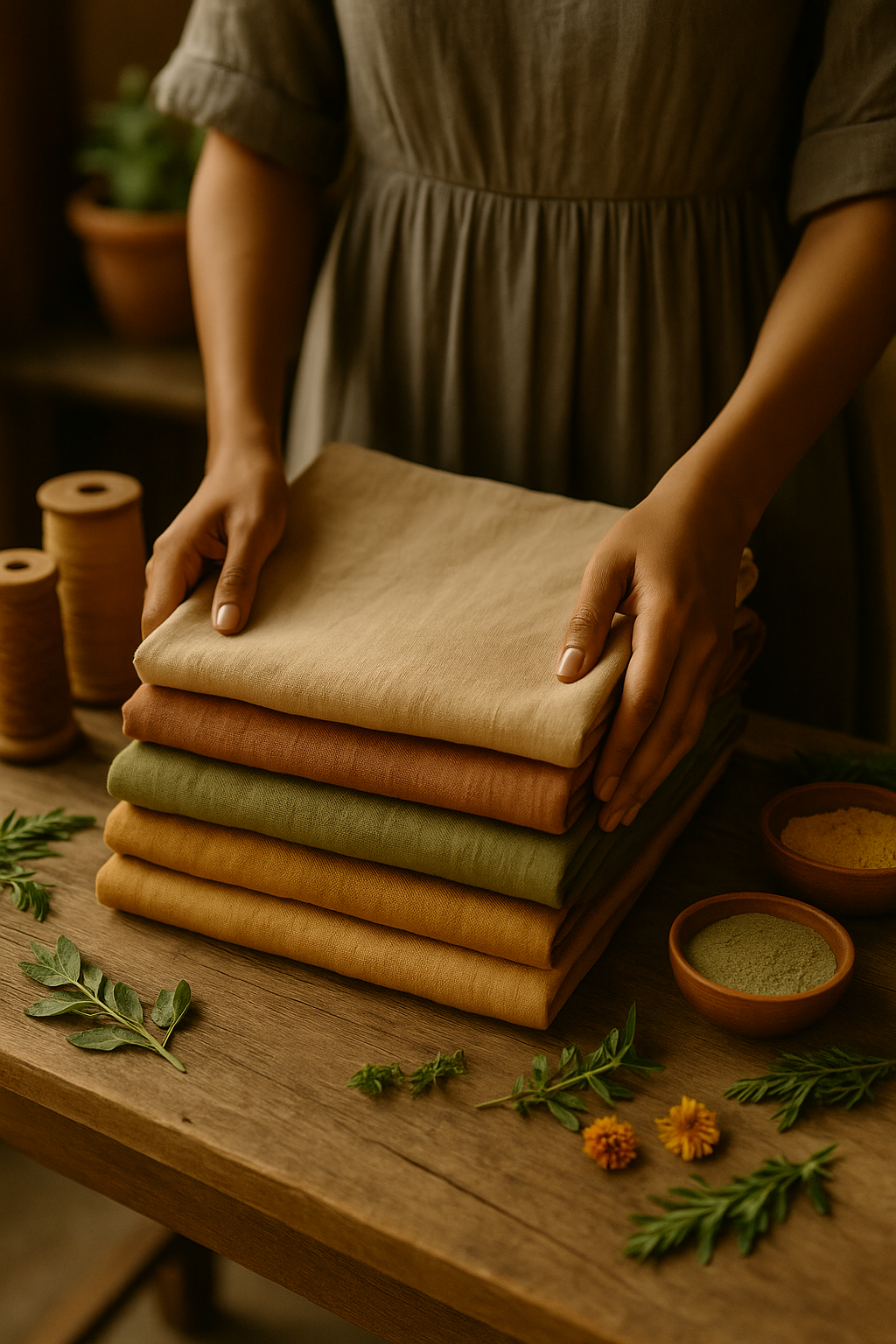
Additional Botanicals Often Used
Leaves and Barks
- Curry leaves (Murraya koenigii) — antioxidant, tonic → soft greens
- Guava leaves (Psidium guajava) — antimicrobial, astringent → olive-greens/browns
- Betel leaves (Piper betle) — antiseptic → deep greens
- Eucalyptus leaves (Eucalyptus globulus) — clarifying, respiratory → grey-green
- Arjuna bark (Terminalia arjuna) — heart tonic, astringent → grey-browns
- Babul / Acacia bark (Acacia nilotica) — astringent, tannin-rich → warm browns
- Banyan bark (Ficus benghalensis) — grounding, astringent → earthy neutrals
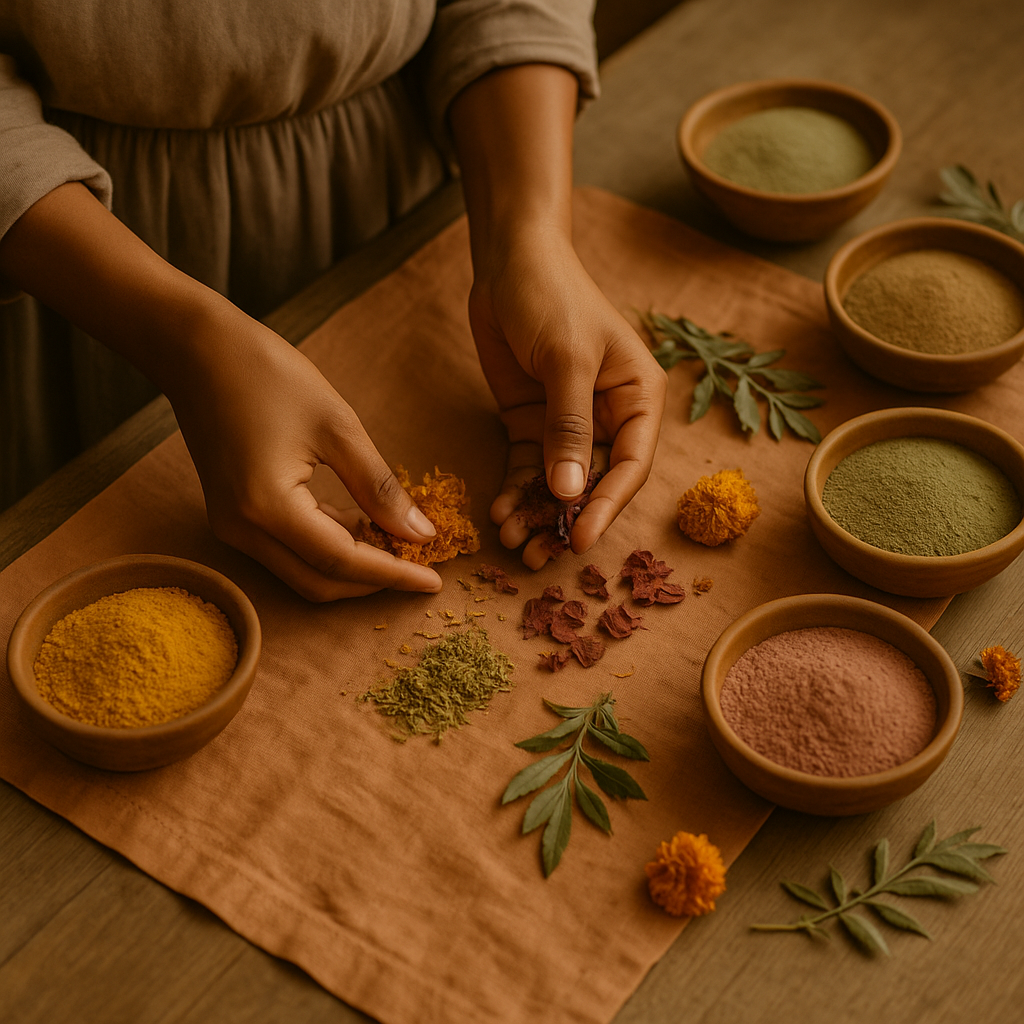
Seeds and Fruits
- Haritaki (Terminalia chebula) — cleansing, rejuvenative → yellow-browns
- Bibhitaki (Terminalia bellirica) — respiratory, cleansing → grey-greens
- Fenugreek seeds (Trigonella foenum-graecum) — anti-inflammatory, digestive → golden-browns
- Black cumin / Kalonji (Nigella sativa) — immune-supportive → charcoal/brown tints
Spices and Aromatics
- Cinnamon bark (Cinnamomum verum) — warming, circulatory → red-browns
- Clove (Syzygium aromaticum) — antiseptic, stimulating → deep browns
- Cardamom (Elettaria cardamomum) — digestive, uplifting → soft green-golds
- Ginger (Zingiber officinale) — stimulating, anti-nausea → warm ochres
- Camphor (Cinnamomum camphora) — cooling, clarifying → pale tones
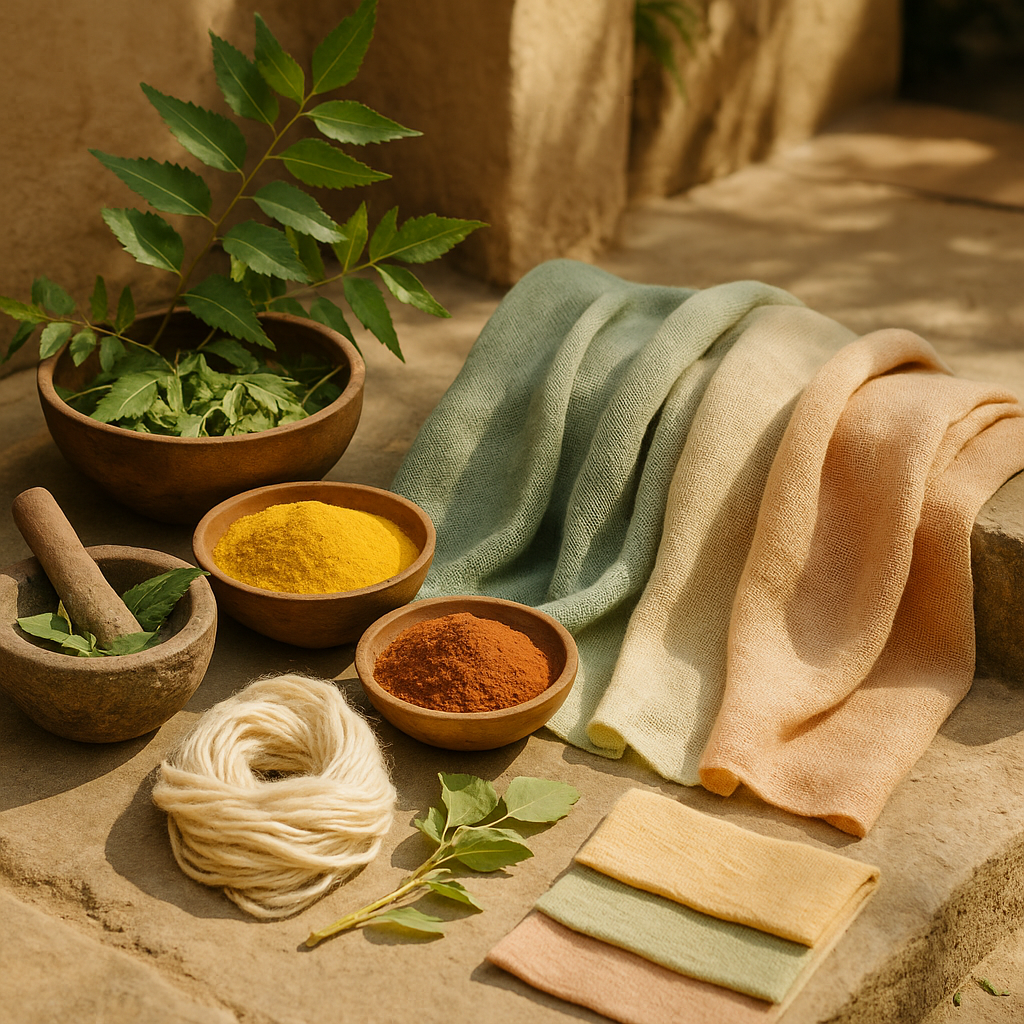
Ayurvastra Today
.
In Ayurvastra, color is medicine: gold speaks of turmeric’s fire and purification; indigo holds the coolness of night; earthy browns carry neem’s cleansing and vetiver’s calm. Each plant leaves its signature on the cloth, making every piece a record of its healing lineage.
Once used in Ayurvedic clinics to accompany treatment, Ayurvastra is being revived as both heritage craft and sustainable textile practice. It brings together ecological dyeing, ancestral wisdom, and a deep respect for the body’s relationship with nature — proof that clothing can nourish as well as adorn.
.
how we integrate this concept
.
Our lotus and hemp collection is dyed and cured based on the foundational principles of ayurvastra
.
all of the pieces of this collection are hand made by us in house and dyed with a specific combination of herbs as requested by each individual and their functional medicinal needs
.
we aim to grow and harvest as many of these plants from our own land as possible - maintaining the cycle of health and healing from our hands to yours
.
If you feel called to inquire about a healing garment for you or someone you love please dont hesitate to contact us
.

